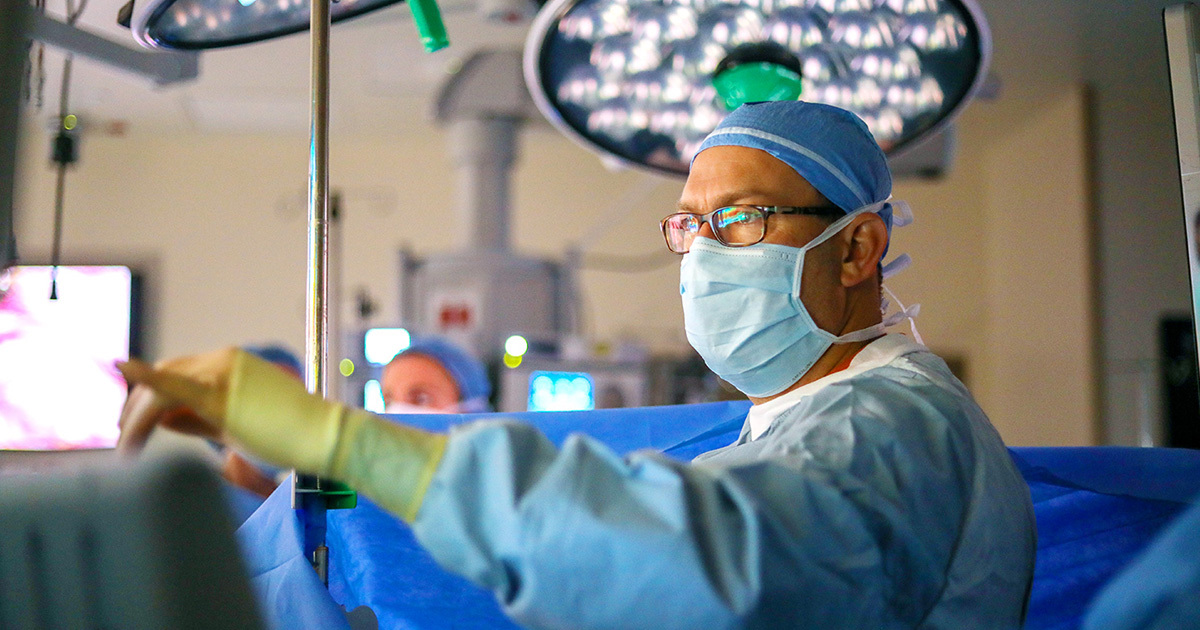About Barrett’s Esophagus
When acid from the stomach repeatedly flows back into the esophagus, it can damage the normal tissue. Over time, the inner lining may transform into tissue that looks more like the stomach or intestinal lining. During an endoscopy, this change appears as salmon-colored tissue instead of the normal pale lining.
Barrett’s esophagus is considered a premalignant condition, a condition that could possibly turn into cancer in the future, because it can increase the risk of esophageal adenocarcinoma, a type of cancer that forms in the glandular cells of the esophagus. However, most patients with Barrett’s esophagus will never develop cancer.
Symptoms of Barrett’s Esophagus
Barrett’s esophagus itself does not usually cause symptoms. Instead, most patients experience symptoms of chronic gastroesophageal reflux disease (GERD).
Symptoms may include:
- Frequent heartburn
- Regurgitation of food or stomach acid
- Chest pain or discomfort
- Difficulty swallowing (dysphagia)
Risk Factors for Barrett’s Esophagus
Barrett’s esophagus is more likely to develop in people with a history of long-term acid reflux or previous damage to the esophagus from reflux.
Risk factors may include:
- GERD
- Being male
- Being over age 50
- White ethnicity
- Obesity, especially carrying excess weight in the abdomen
- Smoking
Diagnosing Barrett’s Esophagus
Because Barrett’s esophagus often does not cause symptoms on its own, it is usually detected during an endoscopy, a procedure where a thin, flexible tube with a camera is used to look inside your esophagus, stomach, and upper intestine. Your doctor may recommend a screening endoscopy if you have a history of long-term GERD.
At UT Health Austin, we use several advanced techniques to improve detection and understand each patient’s level of risk, including:
- Forceps biopsies: Small tissue samples taken during endoscopy
- Optical endomicroscopy: A tool that provides real-time, microscope-level views of the esophageal lining
- Specialized brush biopsies (WATS3D): Collects wider and deeper samples for more accurate results
- TissueCypher: Specialized genetic testing of biopsies samples to predict the likelihood of developing esophageal cancer
These technologies can increase detection rates 2–4 times higher than standard biopsies alone.
Treating Barrett’s Esophagus
<br>Treatment depends on whether abnormal changes in the cells (dysplasia) are present:
- Without dysplasia: Regular monitoring with endoscopy every 3–5 years. Acid control with medication or, in some cases, anti-reflux surgery may be recommended.
- With dysplasia: Treatment may involve radiofrequency ablation (RFA), a minimally invasive procedure that uses heat to remove abnormal cells and reduce the risk of cancer.
Care Team Approach
At UT Health Austin, we take a multidisciplinary approach to your care. This means you will benefit from the expertise of multiple specialists across a variety of disciplines caring for you in one place to avoid having to schedule multiple appointments with providers at locations all over the city. The Texas Center for Esophageal and Foregut Surgery care team includes fellowship-trained foregut surgeons, physician assistants, nurse practitioners, dietitians, social workers, and more who work together with gastroenterologists and other specialists to restore digestive and esophageal function and improve your overall well-being.
We collaborate with our colleagues at the Dell Medical School and The University of Texas at Austin to utilize the latest research, diagnostic, and treatment techniques, allowing us to offer state-of-the-art, evidence-based treatment options for foregut conditions. Advanced imaging and lab testing are also available on-site if needed.
Learn More About Your Care Team

Gastroenterology Clinic
Health Transformation Building, 8th Floor
1601 Trinity Street, Bldg. A, Austin, Texas 78712
1-833-UT-CARES (1-833-882-2737)
Get Directions

Texas Center for Esophageal and Foregut Surgery
Health Transformation Building, 8th Floor
1601 Trinity Street, Bldg. A, Austin, Texas 78712
1-512-495-GERD (1-512-495-4373)
Get Directions